Electric heating of a private house - comfort with minimum
Without electricity, it is impossible to imagine human existence. Electricity is used not only for lighting housing, cooking, but also for heating the house. Moreover, according to a number of indicators, electric heating on the head is ahead of the traditional centralized heating systems.
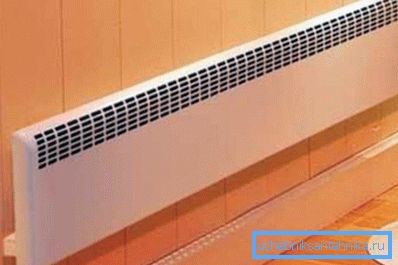
The reasons for the popularity of electric heating
There are several reasons why a person stops his choice on electricity:
- in private construction, quite often there is simply no centralized heating nearby, and there may be problems with gasification. With power supply, such problems should not arise - there is electricity even in small towns, not to mention cities;
- The price of electric heating is much lower. In the long term, the cost of heating a house, for example, with gas, may turn out to be lower, but the amount of equipment costs is minimal for the electrical option;

- Heating appliances that run on electricity are very diverse. So it will not be difficult to choose an option that fits perfectly into the interior of the room;
- in operation, such systems are much easier.
In this barrel of honey there is a small fly in the ointment - increased wiring requirements, and the load on it depends heavily on the area of the house and the type of equipment used.
Note! If the house wiring was laid without taking into account the connection of electric heating devices, then it is guaranteed to be replaced.
In general, when designing wiring for electric heating in a private house, you should follow these recommendations:
- 15A maximum current should correspond to the wiring with a minimum cross section of 1 mm2;
Note! This is the minimum allowable value at which the wiring is likely to get very hot. To prevent this from occurring, the selection of the cross-sectional area of the wire must be based on a ratio of 8 A / 1 mm2.
- in some cases it may be advisable to make a separate entry into the house, it is advisable when using powerful electric boilers. For example, for a house with an area of about 240-280 m2 You will need a fairly powerful boiler, which will require special attention to the wiring, in particular, the peak current in the calculations should be 64A, and the voltage - 380 V. It is more logical to make a separate input for such a “heavyweight”, and the rest of consumers (household appliances, lighting) will cost normal wiring.

Types of electric heating
The phrase “home heating” most often causes in my head an association with dull metal radiators under the windows and permanent problems with discomfort in an apartment in frosty weather. Meanwhile, the use of electricity for heating is not limited to the heating of water and its circulation through the heating circuit.
We can distinguish these types of electrical heating:
- using electric boilers for heating;
- using electroconvectors;
- infrared heaters;
- system "warm floor".
Each of the options mentioned deserves a more detailed study.
Electric boilers
In fact, such a heating system is not much different from the usual centralized heating. The main difference is that the energy source is in the house, and therefore the temperature of the coolant can be adjusted in a wide range. Such heating is more economical than centralized.

On the other hand, such a system has all the disadvantages of a water heating system:
- you will need to arrange the pipes around the house, and you can not do without installing radiators under the windows;
- the boiler itself is not so little;
- the system itself is rather inconvenient in installation and maintenance, you need to carefully observe the slope of the pipes, make sure that no air plugs form. If the system is used to heat a country house, then in winter the heat carrier will have to be drained, otherwise it will freeze and just break the pipeline.
Separately, it is worth mentioning liquid heaters. In such devices, distilled water or another liquid acts as a coolant, and electricity heats it. consider such devices is solely as a temporary measure to heat the room.
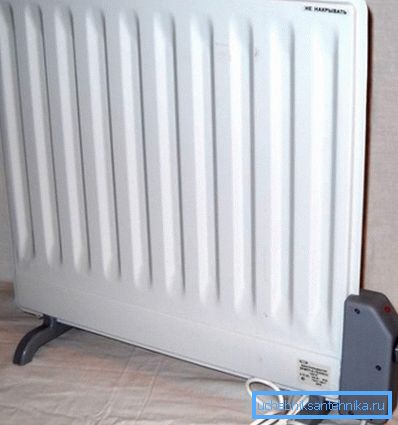
Electroconvectors
In the field of electrical heating can be considered one of the most advanced devices. It is in this category that the choice of forms and power devices is especially great.
You can choose an elegant wall-mounted or powerful floor convector, and if there is a shortage of free space, the heating devices can be placed completely below the floor level. In this case, the installation of special difficulties will not cause and do the job with your own hands.
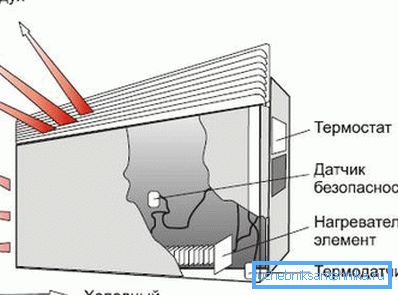
As for the principle of operation, the convectors can be both liquid and air. When using water, it is heated by electricity, heat is spread over the entire fin area and warms up the room.
In order to speed up the process, in many designs, the ribs are additionally ventilated by a fan. In aerial models, metal is heated directly by electricity.
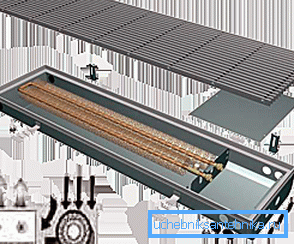
The main advantage of such devices can be considered easy installation. The maximum that may be needed is to provide free space in the wall or floor for the convector pipes during the construction phase. As a rule, the installation instructions for a convector are limited to its connection to the network.
Warm floor
I have not heard about this system just lazy. The name is clear and the principle of action - the heat comes from the floor and heats the whole room.
The key features of this type of electrical heating can be considered:
- labor input - heating elements are mounted directly to the floor;
- high efficiency - The temperature is almost the same at each point in the room.
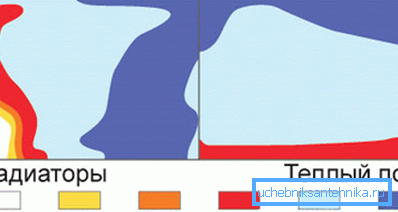
As for the types of warm floor, in addition to the usual (when heating elements are installed in the floor covering), one can also distinguish film. In the case of a film floor, a large sheet of metal foil, located a few millimeters from the floor surface, acts as a heater.
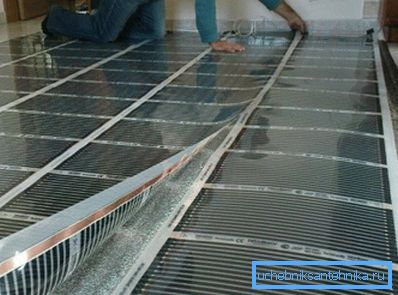
Infrared heaters
A classic example is a low-temperature wall / ceiling panel. A key feature of such devices can be considered that it is not the air that is heated, but the surface of all objects that receive infrared radiation.
Note! In this case, the composition of the air in the room does not change at all, as it happens, for example, when using conventional fan heaters.
Infrared panels are most often used for zone heating. That is, infrared radiation is sent directly to the person and, where it is located, a comfortable microclimate is created. In this case, the temperature in the rest of the room may be lower.
Summarizing
The use of electricity for home heating is a good alternative to centralized heating. In some cases, it may become the only acceptable option for heating. Before proceeding to the practical part, it will not be superfluous to become familiar with the types of electrical heating, the material proposed in the article will help in this matter.
The video shows an example of a rather economical autonomous electric heating.